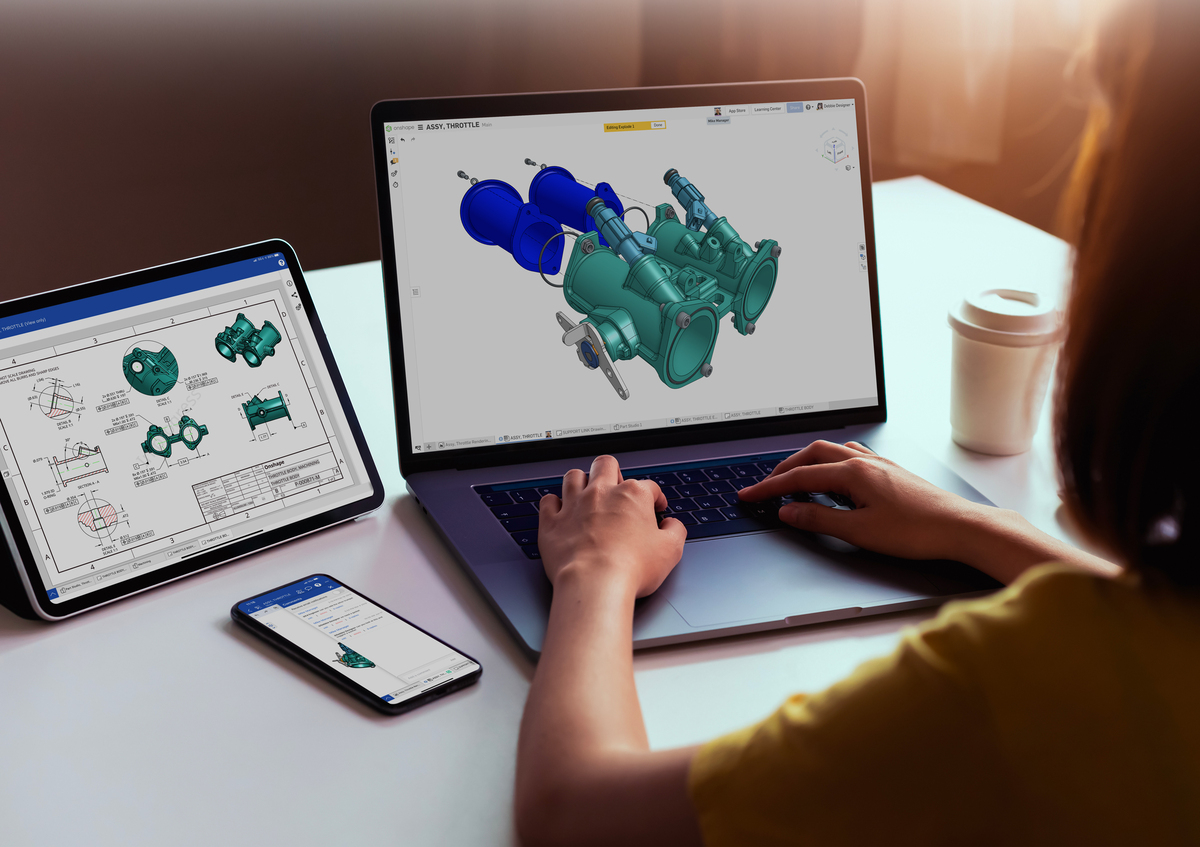Applying software’s agile concepts to hardware product development
Sponsored by Onshape
For more than two decades, software development teams have embraced the Agile work model, which was popularised in part by publications such as the Agile Manifesto.
With the implementation of Agile methodologies, software companies have increased productivity, improved outcome quality and cut time to market in half.
A key difference between the Agile work model and other project management techniques, such as waterfall methodology or the phase-gate process, is a renewed focus on decision flexibility, increased collaboration and quicker feedback loops.
However, while software teams have been able to successfully put Agile processes into practice, the same can’t be said for hardware development.
These teams typically follow waterfall or phase-gate methodologies, causing siloed information, hesitation when suggesting changes and delayed quality assurance processes.
Let’s take a look at the concepts behind Agile methodology and how it can be applied to an Agile process for hardware product development.

Agile concept one: quickening the pace of change
In a waterfall or phase-gate hardware product process, workflows are serialised due to the limitations of the tools needed to get work done. Tools used for hardware design, such as mechanical and electrical CAD, simulation or PDM, are based on files that can only be edited by installed software applications. Typically, only one user can be editing a file, or a set of files, at one time. Only when that portion of work has been completed can it be passed to the next person, still siloed and locked away from the entire team. Feedback has to wait until each portion is complete and files are “checked-in” and copied.
In an Agile product development process, work needs to occur concurrently between teammates, and collaborators should be able to jump right into the project. Quick changes can occur in parallel even as a different segment of the project is being developed.
Today we have an emerging new generation of tools, used for many aspects of hardware design applications such as CAD and PDM that are cloud-native, do not use files, copies or checkout, and don’t require installed applications. These new cloud-native tools enable the high rate of change that is part of an Agile process.
Agile concept two: encouraging higher rates of change and innovation
In a phase-gate process, change is discouraged as it may disrupt the design process at any point and could trigger error-prone or costly release processes.
But change is at the core of the Agile process doctrine as it can produce better results - even save money. An Agile process welcomes high rates of change and iteration of ideas.
Branching and merging – familiar techniques from Agile software development – are now possible to be used with some hardware design tools to increase experimentation and innovation. Modern cloud-native PDM approaches allow users to return to any previous state of editing design data (as opposed to merely going back a few versions of a file, which may not contain a valuable previous state of design).
Designers can fearlessly make changes without worrying about overwriting each other’s work or whether they are viewing the latest version of data. They can work without worrying about triggering time-consuming, file-based release processes.
Agile concept three: accelerating quality assurance testing
Typical hardware design processes put quality assurance testing towards the end of the workflow. And “quality assurance” of course does not just mean conferring to formal quality standards, but also a broad sense of quality in terms of meeting the needs of customers, the principal product development company, and ideally all participants in the design process. But discovering dire issues at the end of the process can cost a lot of money and heartache. That’s certainly not what the Agile process is about.

In an Agile process, design data is easily accessible to all stakeholders. All parties, including customers, can follow a design’s progress and build confidence in a project’s quality in real-time as the project develops. This concept goes hand-in-hand with embracing change. If teams can see and test new ideas every day or even every hour, they can see and validate what actually is working and not working continually – instead of discovering big problems at the end of a process.
A solution for hardware development teams
The transition to an agile work environment for hardware development teams has been difficult for many reasons – cultural change, the inherent nature of hardware product development, and the non-Agile nature of some of the software tools for hardware design.
While these issues won’t be solved immediately, workflows are improving incrementally.
There is growing cultural awareness of Agile processes in the hardware world thanks to the expanding presence of software development, and its universal Agile process in hardware development organisations.
There is a new generation of cloud-native tools for hardware development such as CAD, PDM, simulation and more, and they are perfect for enabling the Agile process.
Companies that master Agile methodology will have a real competitive advantage over those that rely on traditional workflows. But to become more Agile, you’ll need to implement the right culture and tools into your business.
Onshape can help any hardware development team embrace Agile methodology. The cloud-native CAD platform empowers teams to collaborate simultaneously, share data instantaneously and safely, and alleviate the pain points of file-based work that traps teams in serial processes. As the fastest-growing CAD system in the world, Onshape is already aiding teams to become more Agile.
Try Onshape today to see how it can help your team move to an Agile process.
By Jon Hirschtick, Executive Vice President and General Manager, Onshape


Business Reporter Team
Most Viewed
Winston House, 3rd Floor, Units 306-309, 2-4 Dollis Park, London, N3 1HF
23-29 Hendon Lane, London, N3 1RT
020 8349 4363
© 2025, Lyonsdown Limited. Business Reporter® is a registered trademark of Lyonsdown Ltd. VAT registration number: 830519543





